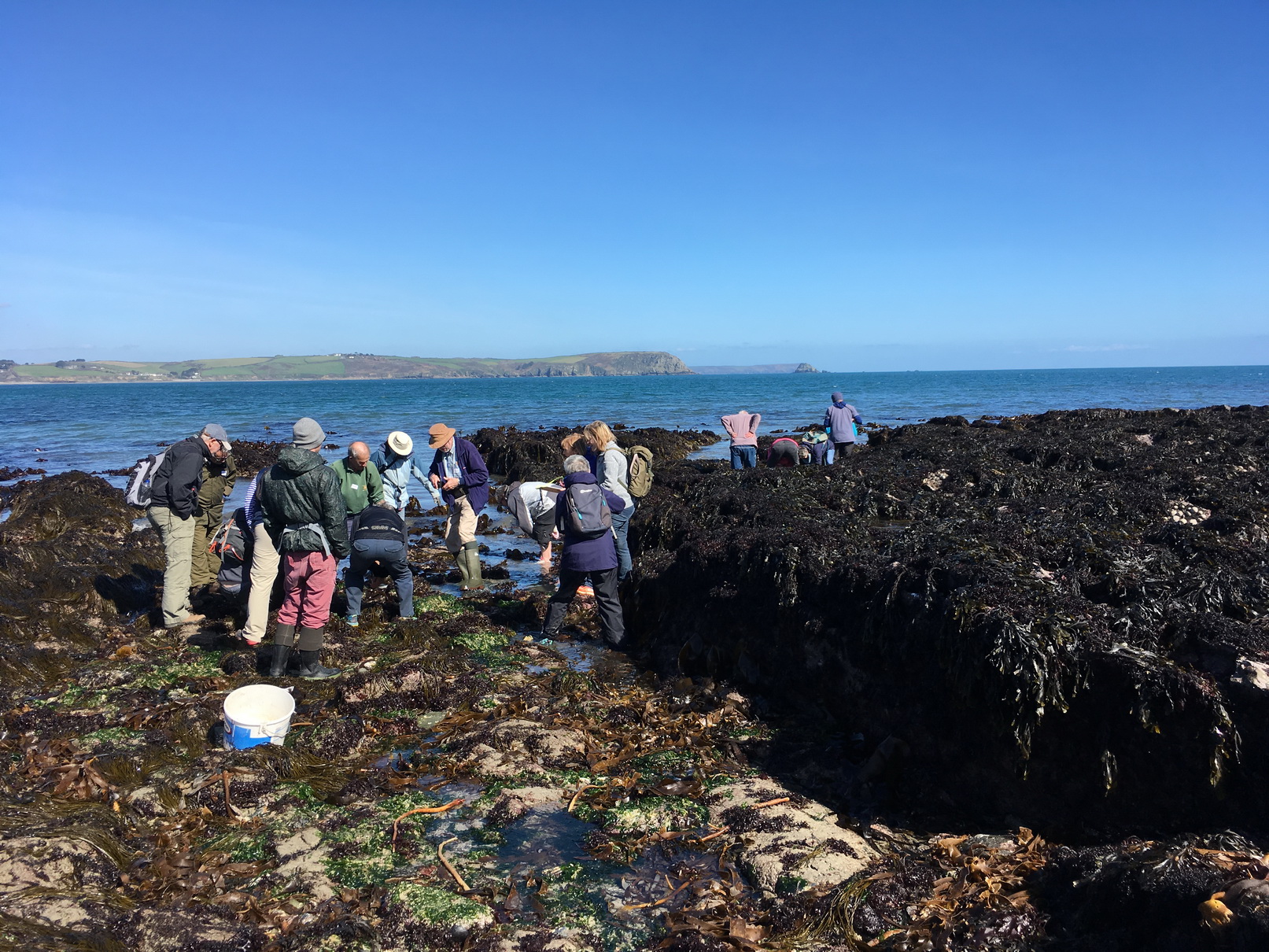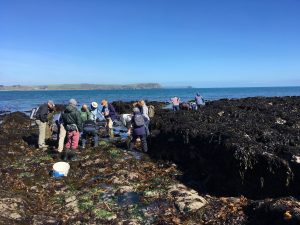
A beautiful day dawned for the Marine Project’s first event: blue skies, bluer seas and a lovely low tide in the middle of the day: what more could a dedicated rock pooler possibly ask for? (Apart from tea and cake of course)
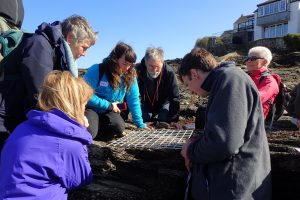
Shoresearch Training was our goal that Sunday near the end of March, chosen because it was just after the Spring Equinox which has the lowest low water and the highest high water tides. Very low is good because so many plants and animals are exposed and can be carefully investigated. We chose an area south of the harbour wall in Portscatho, the rocky shore towards Pencabe Point. It turned out to be a brilliant spot for marine diversity.
Matt Slater, Marine Awareness Officer for Cornwall Wildlife Trust, and his able assistant Adele Morgan, were our Shoresearch Trainers. They know fascinating facts about, and the names of, almost any animal or plant you are likely to find on the shore between the low and high water – the intertidal zone.
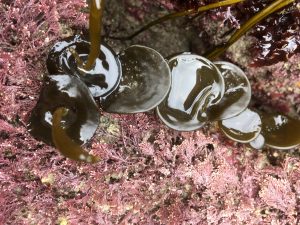
Twenty enthusiasts gathered in Portscatho Memorial Hall for a theory session first. Shoresearch is a Citizen Science project, which means anyone can join in and make a contribution to the records of marine plants and animals as long as their identifications are validated. You need to take a photo so that an expert can say whether your identification (ID) is correct. Also you need training in the survey methods. Matt talked about all this and described the main groups of invertebrates too so we knew what to look for.
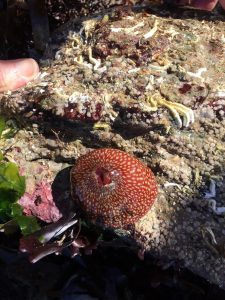
So why are we doing all this? When we record shore species on regular surveys, we’re able to monitor what’s going on and discover if there are any changes in the species we see; perhaps their abundance, or their distribution on the shore. Some species are climate change indicators; others are non-native species coming to our shores from other seas, or simply doing better in warmer seas and increasing in numbers, perhaps to the detriment of the local ecosystem (the Pacific Oyster). Other species, like Coral Weeds, may be slowly disappearing because a warmer sea is becoming more acidic.
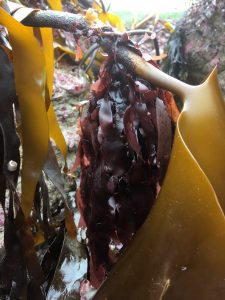
After a quick lunch we walked down the harbour wall steps and across towards Pencabe on a very rocky and slippery area of shore, down to where we saw the glistening brown kelps (Oar weed and Forest kelp) exposed at low water. These forests of kelp protect our shores from the frequent storms we’ve been battered with recently.
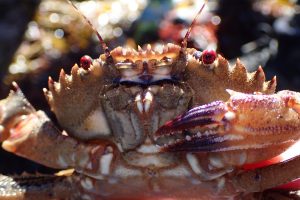
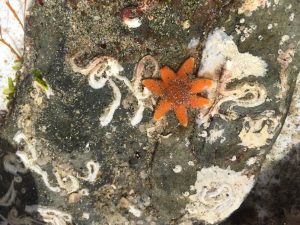
We began with a Timed Species Search where Matt gave each of us a photo card showing a key species which we tried to find in just ten minutes. Painted Top Shell and Serrated Wrack were found quickly, others with more difficulty. Each species identified was recorded. Next up was the Walkover Survey where we had a nice long time to settle down for a real rummage over the rocks, turning them over carefully to see what was underneath – but taking great care to put them back as we found them. This was when the amazing Scorpion fish was found, and other extraordinary things: the Small Headed Cling fish, Velvet crab, Keel worm, Strawberry anemone, Seven – armed starfish, Sea gherkin (a sea slug) and the incredible Star Ascidian sea squirt, a tunicate.
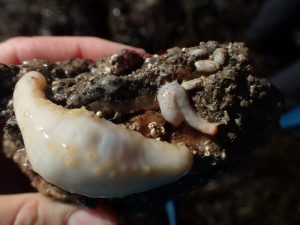
Matt also demonstrated the ‘transect with quadrat’ survey, where we used a survey tape 95m long from the upper to lower shore. Random numbers enabled us to select areas for a quadrat survey, working out the percentage cover of each species identified within our square framed quadrat – each side measured 0.5m.
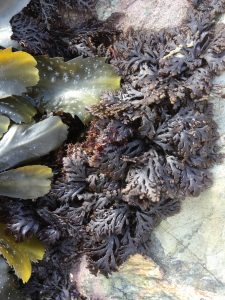
We recorded 77 species in total – a brilliant list. Matt or Adele will now upload the records, including photos, onto the ORKS website (Online Recording Kernow and Scilly) www.ORKS.org.uk This online system has a
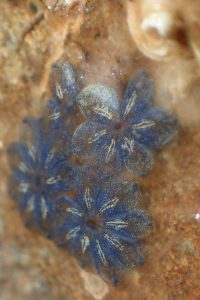
Shoresearch group page so when our Marine Project starts doing its own surveys on Roseland shores, we can enter our records there.
To find out more about Marine Project events this year please make sure you’re receiving Wild Roseland’s newsletter, or visit our website www.wildroseland.org
Huge thanks to Matt and Adele and all 20 enthusiastic volunteers for contributing to such a memorable inaugural event.

